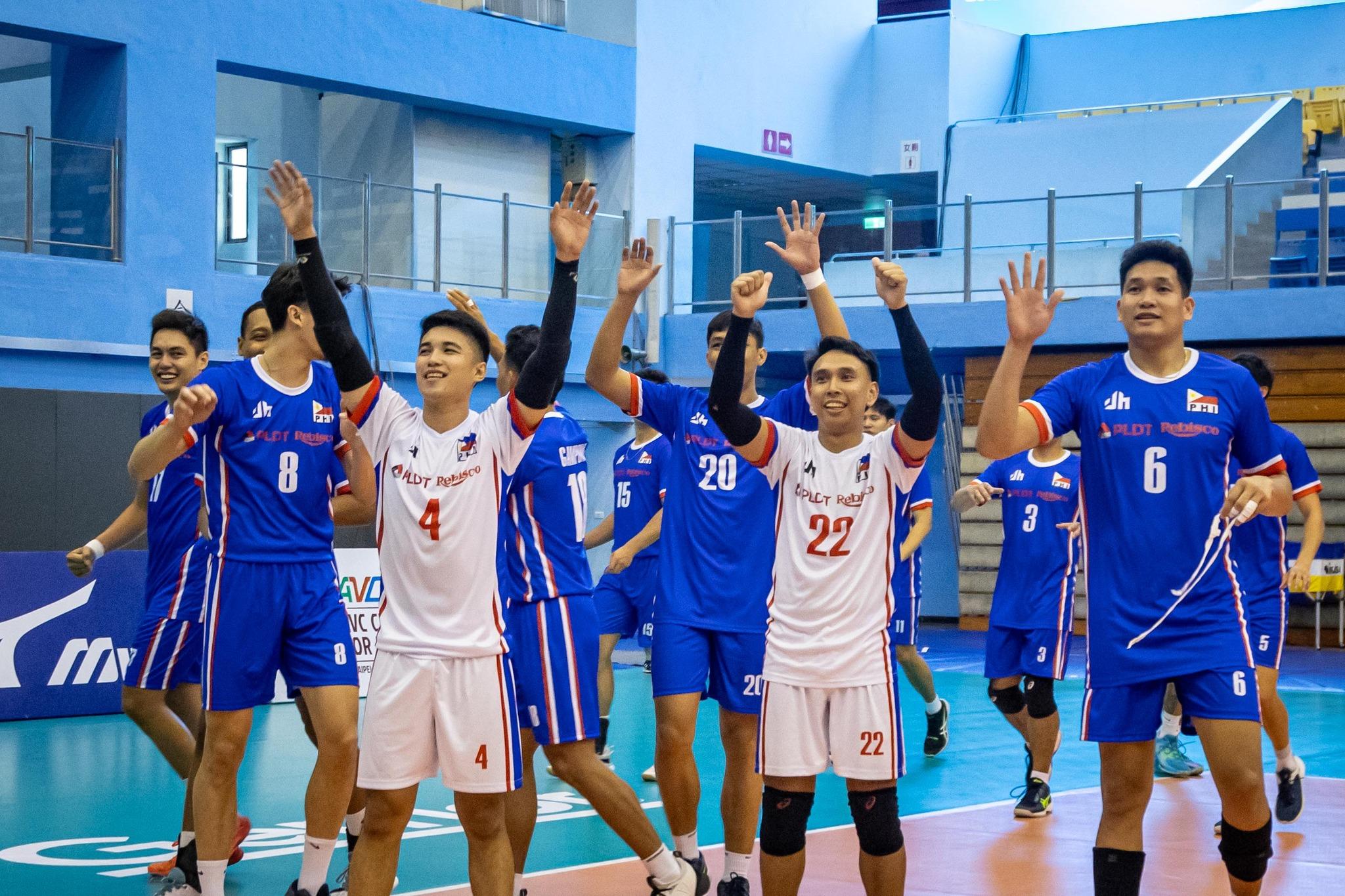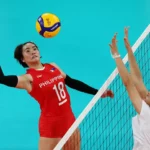Get ready to dive into the world of volleyball in the Philippines! This awesome sport has been around for ages, and it’s still one of the country’s favorites. “Timeline of Volleyball in the Philippines: A Historical Journey” will take you on a wild ride through the history of volleyball in the country. We’ll check out how it started, the famous players who’ve made their mark, and the cool ways it’s become a part of Filipino culture. So, let’s dig in and discover the amazing journey of volleyball in the Philippines!
Volleyball Philippines: A Sporting Journey Through Time
Volleyball has long been a beloved pastime in the Philippines, and its rich history is a testament to its enduring popularity. Let’s dive into the timeline of this thrilling sport’s evolution in the Pearl of the Orient:
1910: The Philippine Volleyball Genesis
It all started in 1910 when Elwood S. Brown, a physical director from the YMCA, introduced volleyball to the Philippine shores. Filipinos quickly embraced the sport, playing it in backyards and later taking it to the sandy beaches.
1916: Leveling Up with Advanced Techniques
Six years later, volleyball took a major leap forward with the arrival of the set and spike technique. This innovation paved the way for more strategic and dynamic gameplay. The introduction of the three-hit rule further fueled the development of clever techniques.
1961: Birth of PAVA
In 1961, the Philippine Amateur Volleyball Association (PAVA) emerged as the governing body for volleyball in the country, ensuring its organized growth and development.
1964: Volleyball Joins the Olympic Family
Volleyball reached a new milestone in 1964 when it officially became an Olympic sport. In 1996, beach volleyball joined its indoor counterpart on the Olympic stage.
Volleyball Fever Grips the Philippines
Over the decades, volleyball has soared to immense popularity in the Philippines. Professional leagues and grassroots tournaments have sprung up across the country, attracting a legion of passionate fans. Filipino volleyball stars, like Alyssa Valdez and Jaja Santiago, have made a name for themselves on the international stage.
Volleyball’s journey in the Philippines is a testament to its infectious energy, strategic depth, and ability to bring people together. It continues to be a source of pride and inspiration for Filipinos, both on and off the court.
Volleyball has become one of the most popular and loved sports in the Philippines. Learn more about the history of volleyball in the Philippines how it was introduced and flourished in the country. Discover facts about volleyball in the Philippines that you may not know, from its humble beginnings to its current status as a major player in the international volleyball scene.
Volleyball in the Philippines: A Century-Old History of Thrills and Spills
Imagine a game that has the excitement of a rollercoaster, the thrill of a race, and the joy of a summer picnic rolled into one. That’s volleyball in the Philippines!
For over a hundred years, volleyball has been part and parcel of our culture. It all started in 1910 when a nifty American named Elwood S. Brown brought the game to our shores.
Back then, volleyball was a different beast. You could hit the ball as many times as you wanted! But Filipinos had an awesome idea: let’s put a limit on the number of hits. And voila, the “three-hit limit” was born, making the game even more intense and awesome.
Over the years, volleyball in the Philippines has been on a roll. We’ve got national teams that have had their moments on the international stage, bringing home medals and trophies. And just like our national heroes, they’ve inspired generations of young athletes to spike, dig, and set their hearts out.
Today, volleyball is more popular than ever, thanks to the rise of professional leagues like the Premier Volleyball League (PVL). These leagues have given our talented athletes a platform to showcase their skills and become household names.
But volleyball isn’t just about the pros. It’s a game that brings people together, from kids learning the basics at their local schools to seniors playing in their community centers. It’s a game that empowers women, teaches teamwork, and sparks a passion that lasts a lifetime.
So, here’s a toast to volleyball in the Philippines! May it continue to bring us thrills, spills, and countless unforgettable memories for generations to come.
Unveiling the Rich Tapestry of Philippine Volleyball: A Historical Journey
Prepare to embark on an enthralling adventure through the captivating history of volleyball in the Philippines. It’s a story of passion, dedication, and the indelible mark that Filipinos have etched upon the global volleyball scene.
Let’s trace our steps back to 1910, when the game made its debut in the Philippines under the guidance of Elwood S. Brown. Like wildfire, volleyball instantly ignited a fire in Filipino hearts. It quickly became a beloved pastime enjoyed in every nook and cranny of the country, from backyards to glistening beaches.
As the sport gained momentum, the Philippine Amateur Volleyball Association (PAVA) emerged in 1961, providing a solid foundation for organized volleyball. PAVA became a breeding ground for talent, fostering competition and nurturing the skills of aspiring Filipino players.
But it was the Filipinos themselves who truly left an enduring legacy on volleyball. Their ingenuity and passion inspired them to develop a unique style of play, emphasizing lightning-fast agility and explosive speed. Their innovations, like the iconic “bomba” spike, forever transformed the game.
In 1964, volleyball’s stature soared as it made its grand entrance onto the Olympic stage. Filipino players seized this opportunity to showcase their talents on the world stage, representing their country with unparalleled skill and determination.
Today, volleyball remains a beacon of pride for Filipinos. From professional leagues to grassroots tournaments, volleyball has become a vibrant part of the nation’s sporting culture. Filipino volleyball stars have achieved international acclaim, inspiring countless aspiring athletes to dream big.
Historical Timeline of Philippine Volleyball:
| Year | Milestone |
|---|---|
| 1910 | Introduction of volleyball to the Philippines |
| 1961 | Formation of the Philippine Amateur Volleyball Association (PAVA) |
| 1964 | Volleyball becomes an Olympic sport |
Key Contributions of Filipinos to Volleyball:
- Development of the “bomba” spike
- Refinement of the three-hit limit rule
- Innovative defensive strategies
Legacy and Impact of Volleyball in the Philippines:
- Source of national pride and inspiration
- Fostering of a strong grassroots sports culture
- International recognition and success of Filipino volleyball players
Philippine Volleyball: A Timeline of Triumphs and Tribulations
Volleyball made its grand entrance into the Philippines in 1910, and it’s been a wild ride ever since! Here’s a peek into the highs and lows of this beloved sport in our country:
1910: Volleyball Arrives on Philippine Soil
Get ready to serve, set, and spike! Volleyball was first introduced to the Philippines way back in 1910. It quickly caught on like wildfire, igniting a passion that continues to burn bright today.
1961: PAVA Takes the Court
Organization is key! The Philippine Amateur Volleyball Association (PAVA) stepped onto the scene in 1961, providing a solid foundation for the sport to thrive. PAVA has been the driving force behind the growth and development of volleyball in the Philippines.
1978: Philippines Hosts Asian Volleyball Championship
Talk about a major moment! In 1978, the Philippines proudly hosted the Asian Volleyball Championship. It was a groundbreaking event that showcased the country’s volleyball prowess and put the Philippines on the map as a volleyball powerhouse.
Filipino Innovations: Changing the Game
Filipino volleyball players have left an unforgettable mark on the sport. They were instrumental in introducing the three-hit limit rule, a game-changer that completely altered the strategy and dynamics of volleyball. Not to be outdone, Filipinos also invented the “kill spike,” an unstoppable attacking move that transformed the game into an even more thrilling spectacle.
World-Class Volleyball Legends
The Philippines has produced some of the most exceptional volleyball players the world has ever witnessed. Alyssa Valdez is a prime example, dazzling audiences with her unmatched skills and leading the Philippine team to countless victories. Her legacy as one of the most celebrated volleyball players in the world is truly inspiring.
Volleyball Today:
Fast forward to the present, and volleyball remains a beloved sport in the Philippines, with professional leagues and grassroots tournaments thriving throughout the country. It’s not just a game; it’s a passion that unites Filipinos, bringing joy and fostering a sense of national pride.
So, there you have it, the incredible journey of Philippine volleyball – a story filled with triumphs, tribulations, and a whole lot of passion!
FAQ
Q1: When was volleyball first introduced in the Philippines?
A1: Volleyball was introduced in the Philippines in 1910 by Elwood S. Brown, the Physical Director of the YMCA.
Q2: What was the impact of the three-hit rule on Philippine volleyball?
A2: The three-hit rule led to the creation of new volleyball techniques and allowed Filipino players to develop their unique style of play.
Q3: Which Philippine volleyball player was known for his powerful “kill” spike?
A3: Florentino “Kid” Santos was renowned for his powerful “bomba” or “kill” spike, an attacking technique invented by Filipinos.
Q4: What year was the Philippine Amateur Volleyball Association (PAVA) founded?
A4: The Philippine Amateur Volleyball Association (PAVA) was established in 1961.
Q5: How has volleyball contributed to Philippine culture and society?
A5: Volleyball has become a beloved sport in the Philippines, fostering camaraderie, promoting physical fitness, and uniting Filipinos from all walks of life.
- Neshkoro, Wisconsin: A Small-Town Escape on the White River - November 23, 2024
- Onamia, MN: Your Guide to Mille Lacs Lake & Native American Culture - November 23, 2024
- Norlina, NC: Exploring the History and Future of this Warren County Town - November 23, 2024















